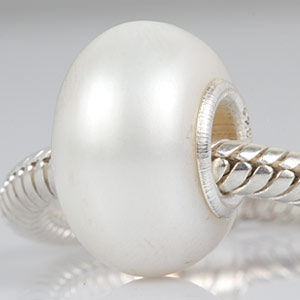You are here: home > Jewelry Knowledge > Freshwater Pearl Quality and Pearl Type and Pearl Care
Product (1824)
- 925 Silver European Beads Wholesale (195)
-
European Charm Beads
(508)

- large hole Glass Beads (126)
- Chamilia Charm Beads (51)
- European Swarovski Beads (65)
- European Holiday Charm Beads (152)
- Sterling Silver Jewelry (71)
- Living Locket Pendant (11)
-
J Crew Jewelry Wholesale
(108)

- Fashion Jewelry (61)
-
pashmina scarves wholesale
(26)

- Silk Neck Scarves (68)
-
Shamballa Bracelet
(56)

- Tresor Paris Jewellery (35)
- Shamballa Jewels (53)
-
Shamballa Style Bracelet
(35)

-
Earphone Jack Accessory
(48)

-
Bamboo Earrings
(15)

-
Basketball Wives Earrings
(87)

-
Poparazzi Earrings
(6)

- London 2012 Olympics Jewelry Collection (14)
- Alpha Kappa Alpha Jewelry (3)
- Feather Hair Extensions (30)
Offers (8)
News (8)
blog (21)
Jewelry Knowledge (10)
Factory Profile (6)
Credit Report
Products Index
Jewelry Knowledge
Freshwater Pearl Quality and Pearl Type and Pearl Care

DoodaJewelry supply high quality big hole pearl beads fit european, chamilia, biagi, lovelinks etc European Brand Jewelry Bracelet. It is important to know about pearl quality and other pearl knowledge.
Freshwater Pearls
Freshwater pearls are found naturally in rivers, lakes and other freshwater bodies of water. With a total production of 1,500 tons in 2006, China holds a monopoly over the pearl industry today. Freshwater pearls are cultured in all the surrounding provinces including: Zhejiang, Anhui, Jiangsu, Hubei, Hunan, and Jianxi. The largest marketplace for these freshwater pearls is the world's pearl trading hub, Hong Kong.
Pearl Quality
Pearl Luster
A pearl's luster is a very important part in determining the quality when evaluating natural and cultured pearls. Luster is the degree of shine that reflects from the surface of a pearl as well as from within a pearl when light travels through the outer layers of nacre and is reflected from within. The more brilliant and mirror-like the surface of the pearl is, the higher its quality. A dull or chalky surface indicates an inferior pearl.
Pearl Nacre Thickness
Nacre thickness is a grading criteria only applied to bead-nucleated saltwater pearls and rare bead-nucleated freshwater pearls. Nacre is the substance of which a pearl is composed. It is the calcium carbonate compound that coats the grafted mother of pearl bead. The thicker the nacre the better and longer lasting the pearl will be.
Pearl Nacre Quality
The nacre quality of a pearl is determined by how well light passes through the multiple layers of nacre. If the pearl nacre quality is poor the pearl will have a chalky reflection. Poor nacre quality can result by chance (an overabundance of the calcium carbonate polymorph, vaterite), adverse environmental conditions, poor farming techniques, or poor processing methods.
Pearl Color
Pearls come in wide variety of colors, also known as "palette of colors". Pearl color assessment involves determining two elements that make up the color of a pearl; the body color and the overtone. The body color is the primary color of a pearl. This is very often white, yellow, lavender, peach, black, or green. The overtone is the secondary color that tends to float over the surface of the pearl. It is also referred to as the tint. Certain colors may be more valuable than other colors but it is best to choose the color according to your preference.
Pearl Surface Perfection
Determining the surface perfection of a cultured pearl involves examining the surface or "skin" of the pearl to determine whether or not it is free from spots, cracks, dimples, bumps, or any other inclusions. Surface perfection is graded by the percentage of skin area free from any imperfections.
Pearl Shape
Pearl shape can be divided into three general categories; round, symmetrical, or baroque. A round pearl is typically the most valuable, and is graded by degree of sphericity. A pearl may be slightly off-round and still be considered spherical. A symmetrical pearl may be off-round, drop, or button, but will always have a single axis of symmetry. A baroque pearl is a pearl that is not round and does not have an axis of symmetry. A baroque pearl may be circle which means there are visible circles around the diameter of the pearl.
Pearl Size
Size does matter when it comes to pearls. The larger the pearl, the more valuable it is. Measurements are taken perpendicular to the drill holes and expressed in half-millimeter ranges, for example, 6 to 6.5 millimeters.
Pearl Grading
Grading Overview
The cultured pearl industry has two primary grading systems that are accepted and considered standard which include the A-AAA system and the A-D system, also known as the Tahitian grading system.
Doodabeads.com Pearls grades all pearls by the A-AAA Pearl Grading System.
AAA
The highest quality cultured pearl. This means that there is a very high luster, with over 95% of the pearl surface free from any type of defect.
AA
High luster with at least 75% of the pearl surface free from defect.
A
Medium luster with more than 25% of the pearl surface showing defects. The use of '+' in addition to either A or AA is acceptable to indicate the quality of the pearl falls between two pearl grades. The addition of '+' to the highest grade of AAA is not an acceptable practice.
Pearl Care
The main threat to cultured pearls is chemicals. Cosmetics like perfume, make-up and hairspray contain chemicals that can leave cultured pearls dull and pitted. It is fine to use these products but always put the pearl jewelry on last. When undressing the pearl jewelry should be first thing off.
Avoid wearing pearl jewelry when cleaning the house, gardening and swimming.
Many cleansers and detergents contain chemicals like ammonia and chlorine, which can damage cultured pearls. Chlorinated water which is found in swimming pools as well as tap water (to a lesser extent) is also hazardous to cultured pearls.
Clean pearl jewelry with a gem soft cloth (include in our pearl care kit)
Wipe the cultured pearls gently with a gem soft cloth (included in our pearl care kit). Don't use a toothbrush and soapy water to clean cultured pearls. Check the label before using any jewelry cleaning products on cultured pearls. Cleaners that are not "pearl-safe" contain detergents and other chemicals that can dull nacre or cause pitting.
Store pearl jewelry in soft pouch (included in our pearl care kit)
Store your pearl jewelry in a soft pouch (included in our pearl care kit) away from other hard jewelry that can damage the pearls. Avoid storing pearl jewelry in bank safe deposit boxes, because the bank safes are humidity free cultured pearls are considered organic colored stones; over time this environment can cause your pearls to crack.
Frequently worn cultured pearls should be restrung once a year.
This will keep your cultured pearls in good condition and ready for daily wear.
Pre Page:
Grizzly Feather Hair Extensions are...
Next Page:
New Arrival Fashion Pearl Jewellery,...




